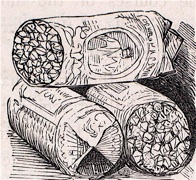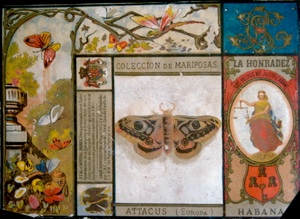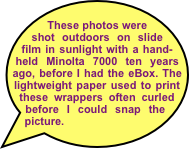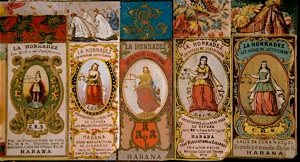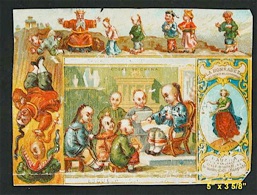Sometime in the 1850’s Cuban cigarette manufacturer Louis
Susini began bundling his smokes in colorful 4 3/4” x 3 3/8”
paper wrappers, one of the earlier uses of full color lithographic
labels to package a product. No one knows who came up with
the brilliant idea to design the labels in sets, thus becoming the
first use of a collectible to sell tobacco, but it was a stroke of
marketing genius. The use of these wrappers had three impor-
tant consequences: [1] sets encouraged collectors, thus multiple
purchases, [2] collecting generated publicity and [3] the ever-
changing sets became a major weapon in Susini’s worldwide
battle with counterfeiters.
Susini’s charming and informative packages were so popular with children and adults alike that other Cuban companies were compelled to offer similar wraps. Cuban cigarettes of the 1860’s included Julian Rivas’s Figaro, Celestino Asay’s Florita, La Viuda (widow) de Garcia’s Mi Fama por el Orbe Vuela, Llaguno y Cia’s La Charanga de Villergas, Eduardo Guillos’s Para Usted, Anselmo del Valle’s H de Cabañas y Carvajal, La Dignidad,
La Africana, La Belleza, La Rosarito and Barcenas y Posadas.
For more than two decades Louis Susini’s La Honradez and other
companies continually created new cigarette package labels. Almost
4,000 different are reported to be in three scrapbooks housed in
the Jose Marti National Library in Cuba.
This sample from the NCM collection is intended to show
the wonderful imagination, variety and artistry of cigarette
packaging 150 years ago.

